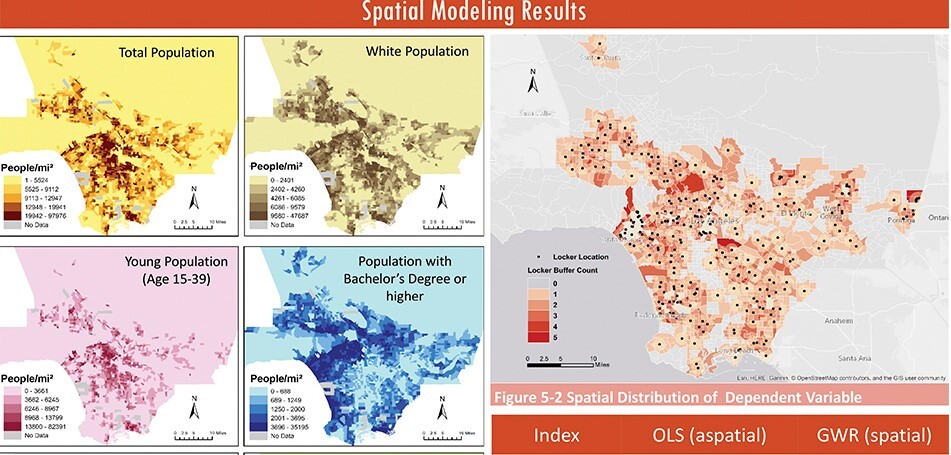News | METRANS Researcher Spotlight: Jiawen Fang
Stop the VideoNews

by Brittany Cooper and Naomi Suzuki

METRANS researcher Jiawen Fang focuses her work on sustainable freight and the social and environmental impacts of innovative technological interruptions such as Amazon Lockers, truck electrification, and ride-sharing platforms. Jiawen's academic journey started in Peking University in China where she received a bachelor’s degree in Urban Planning with a special interest in spatial analysis. She is currently pursuing the Spatial Analytics Certificate with a concentration on advanced spatial analysis tools, which she applies to her work in her doctoral research program at USC’s Sol Price School of Public Policy.
During her time in the program, Fang has earned recognition for her work on the report “The Spatial Dynamics of Amazon Lockers in Los Angeles County” with METRANS Director Genevieve Giuliano and USC professor An-Min Wu. The report addresses the environmental and safety concerns surrounding last-mile delivery during the steady increase in e-commerce, researching the solution of setting up “Pick-up Points” (PPs) networks or Automated Parcel (APs) systems as a strategy for potential GHG emission reductions. The research team conducted a study of Amazon lockers in Los Angeles County. The study includes three steps: (1) describe the “spatial distribution of lockers using spatial pattern analysis tools;” (2) analyze the socio-economic and built environmental factors that might affect the spatial distribution of Amazon Lockers using spatial regression models; and (3) predict and estimate the potential GHG emission reduction based on the spatial regression models. The third step is still in progress.
Fang and her co-authors found that the spatial distribution of lockers adhered to a “three-tier-clustering" pattern according to the level of density. The results also relayed that different geographic variables such as internet use, certain demographics like race, income, and education, and walkability explained 41% of the spatial variation in the way lockers were distributed.
Using her work, Fang also co-created with Wu an eponymously named map, “The Spatial Dynamics of Amazon Lockers in Los Angeles County,” which was selected for the 35th volume of Esri Map Book, a collection of maps that Esri annually selects to showcase how digital geography is helping governments, businesses and citizens to understand and sustain our world. The map is designed to “describe and explain the spatial dynamics of Amazon Hub Lockers in Los Angeles (LA) County using various analysis tools,” and visually displays the results from the report. The maps are selected from an international pool of contenders and are highly regarded within the Geographic Information Science (GIS) field.

While the Esri Map Book is usually handed out to attendees of the Esri’s User Conference (UC) in San Diego, this year’s edition was released in digital form during the inaugural virtual UC, exhibiting the work of mapmakers from all over the world. Jack Dangermond, ESRI Founder and President, recognized the effort and significance of the researchers’ work by congratulating them and stating that their work “inspires us through not only the innovative use of technology but through sharing an understanding and each other’s world.”
News Archive
- December (1)
- November (6)
- October (4)
- September (2)
- August (3)
- July (4)
- June (3)
- May (7)
- April (8)
- March (11)
- February (8)
- January (7)
- December (7)
- November (8)
- October (11)
- September (11)
- August (4)
- July (10)
- June (9)
- May (2)
- April (12)
- March (8)
- February (7)
- January (11)
- December (11)
- November (5)
- October (16)
- September (7)
- August (5)
- July (13)
- June (5)
- May (5)
- April (7)
- March (5)
- February (3)
- January (4)
- December (4)
- November (5)
- October (5)
- September (4)
- August (4)
- July (6)
- June (8)
- May (4)
- April (6)
- March (6)
- February (7)
- January (7)
- December (8)
- November (8)
- October (8)
- September (15)
- August (5)
- July (6)
- June (7)
- May (5)
- April (8)
- March (7)
- February (10)
- January (12)















